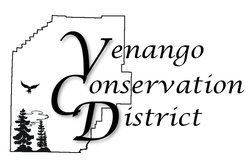|
Pennsylvania DCNR says that at the beginning of the 21st century, about 1,300 species of nonnative plants existed in Pennsylvania outside of gardens, parks and agricultural lands. That means that 37 percent of Pennsylvania’s total wild plant flora consists of nonnatives. DCNR says that more nonnative plants are introduced every year. A nonnative plant is one which was brought into the state and eventually became established in the wild.
Pennsylvania’s native plants number 2,100 in the wild. They include ferns, mosses, grasses, sedges and rushes, wildflowers, woody trees, shrubs and vines. Native plants are those plants growing in Pennsylvania before European settlers arrived. Native plants evolved in Pennsylvania and are therefore well adapted to the area soils and climate. That means they are easy to care for once established. Many natives require little to no additional fertilizer and extra watering. Landscaping with native plants means you can use less fertilizer and less water to keep them looking happy and healthy in your garden. If everyone were to utilize native plants in their gardens, there would be less chemicals like fertilizers and pesticides washing away to local waterways, which means a reduction in water pollution. According to the Penn State Cooperative Extension, another big reason to landscape with native plants is biodiversity. 90 percent of our native insects feed on only three or even fewer families of plants. Our native insects rely heavily on native plants. If our native insects cannot feed on growing nonnative plant populations, then by extension, native birds would have fewer insects to feed on. Penn State Extension says that what we plant in our yards today will determine what kind of wildlife will be living in Pennsylvania. By planting native species we can help Pennsylvania’s natural history and diversity sustain. Pollinating insects keep our fruit, vegetable and seed crops going. Bees, butterflies, moths, beetles, birds and even bats rely on pollen and nectar. Food from native plants will keep our native ecosystem going. The Venango Conservation District is pleased to announce that a grant from the Pennsylvania Association of Conservation Districts has been received. Funding is provided through the Pennsylvania Department of Environmental Protection under Section 319 of the Clean Water Act administered by the US Environmental Protection Agency. The district will be working to educate home/land owners and the general public on how to landscape with native plants rather than exotic plants. A workshop will be held later in the summer. Three outdoor brochure holders have already been installed throughout Two Mile Run County Park. These brochure holders contain a hand-out sheet highlighting the native plants in bloom each month on the Park. Informational signs demonstrating how native plants reduce nonpoint source pollution in the watershed are also installed on the Park. Want to learn more about using native plants in your landscaping? There are many great websites to use for research. The Pennsylvania DCNR webpage on Landscaping with Native Plants is www.dcnr.state.pa.us/forestry/plants/nativeplants. The Penn State Cooperative Extension webpage on Pennsylvania Native Plants for the Perennial Garden is located at http://extension.psu.edu/plants/gardening/fact-sheets/perennial-garden/pa-native-plants-for-the-perennial-garden/pdf factsheet.
9 Comments
|
CATEGORIESs
All
Archives
July 2024
|


